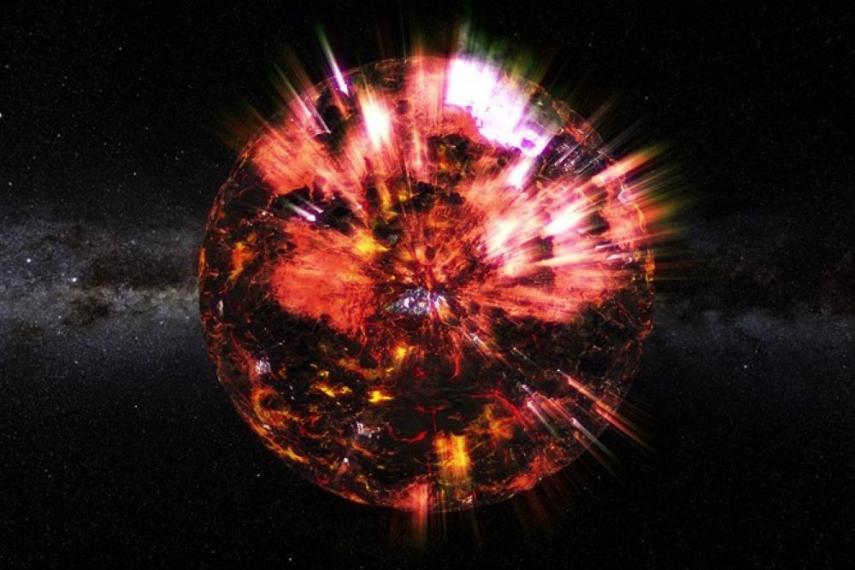The Twisted Story of Neutron Stars

Examining the inner workings of one of the most fascinating objects in the universe.
Born out of supernovas—the powerful explosion of stars—neutron stars have long fascinated researchers. About twenty kilometers in diameter, these ultra-compact objects have the mass of two suns and exhibit some of the strongest gravitational and magnetic fields in the universe. The pressures found at a neutron star’s core may be like those that existed during the big bang. Thus, understanding the physics of neutron stars will provide insights into the fundamental forces that led to the cosmos.
A Superfluid Crust
Physics professor Dr. Alexandros Gezerlis and PhD student Georgios Palkanoglou are studying the physics of superfluid neutron matter in neutron stars. Below the surface of a neutron star, in a region known as the crust, lies a frictionless liquid called superfluid, which results in intriguing astrophysical phenomena related to the star’s cooling, seismic, and gravitational properties. Gezerlis and Palkanoglou determined that new models would be needed to examine the superfluid neutron matter crust more carefully. They went back to basics to develop an approach to the matter within these compact stars which combines first-principles and more qualitative techniques.
Twisted Equations
Neutron stars are finite systems, meaning that there are limits and bounds, but compared to the size of an atom’s nucleus, their size is essentially infinite. Gezerlis and Palkanoglou mapped the properties of a finite system (which is easier to handle computationally) to the near-infinite system that characterizes an actual neutron star. The researchers then applied a series of calculations to manipulate the conditions of the finite system. Their approach is unique because they employed computations that examined twisted boundary conditions (a theoretical device that has been used in other areas of physics). They found that accounting for twist angles made their equations more accurate for extrapolation because it reduced errors related to the quantities of superfluid neutron matter.
“This is the first study of superfluid neutron matter that borrows techniques employed in particle physics and solid-state physics,” says Gezerlis. “Our approach and results will help reduce extrapolation-related errors in the extraction of superfluid neutron matter properties and thus provide a better understanding of the inner workings of these truly fascinating astronomical objects.”

Alexandros Gezerlis is Associate Professor and Colloquium Coordinator in the Department of Physics.
This work was supported by the Natural Sciences and Engineering Research Council of Canada (NSERC), the Canada Foundation for Innovation, and the Early Researcher Award program of the Ontario Ministry of Research, Innovation, and Science. Computation resources were provided by SHARCNET and NSERC.
Palkanoglou G, Gezerlis A. Superfluid neutron matter with a twist. Universe. 2021 Feb. doi: 10.3390/universe7020024